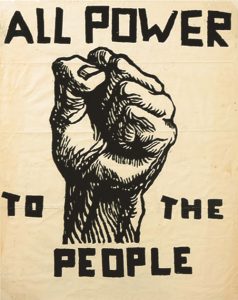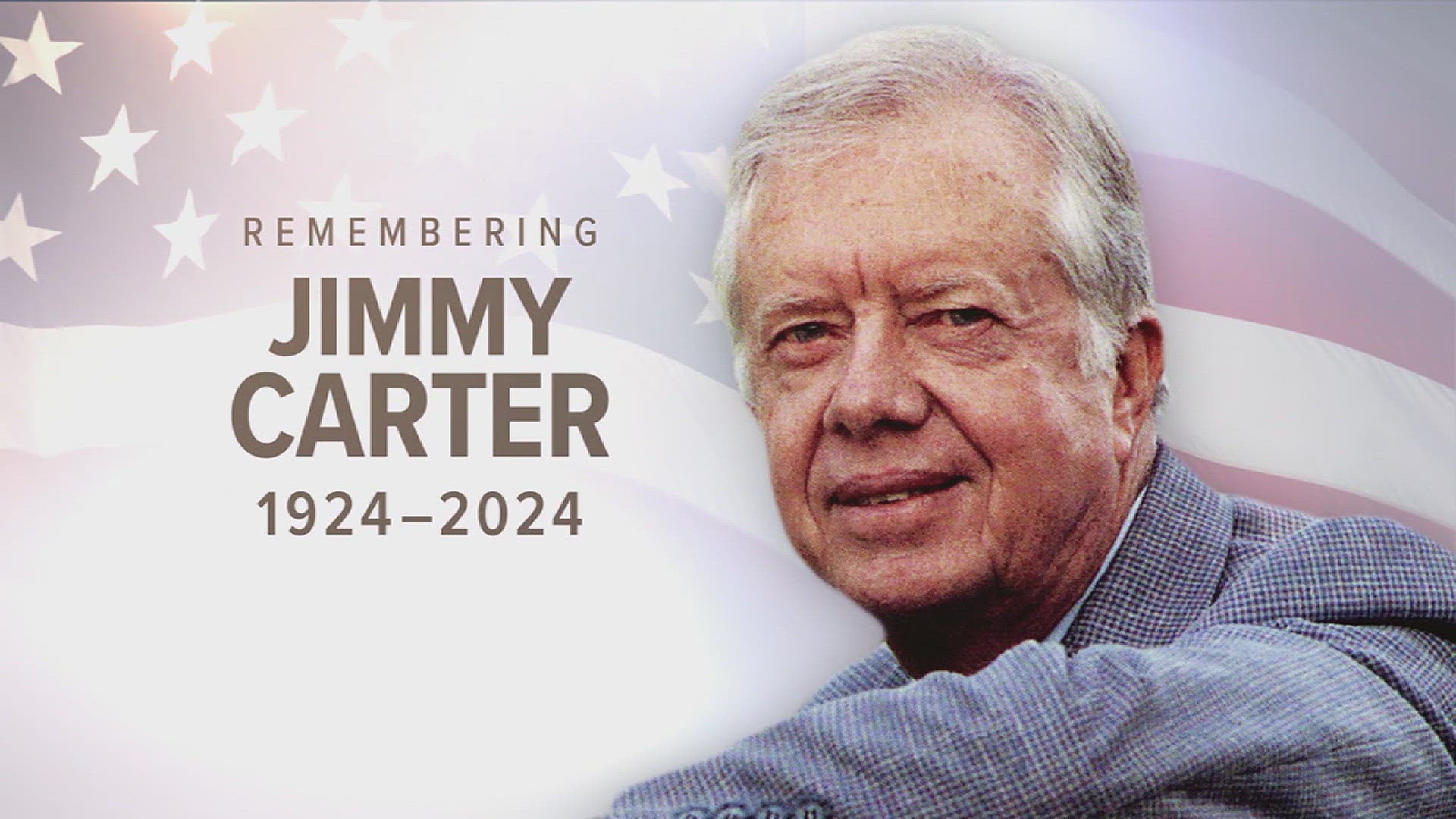(Akiit.com) Fifty years ago, the term “Black power” fired into the American vocabulary. In celebration of the fifty-year anniversary of the call for Black power this week, I present this exclusive excerpt from my new book, Stamped from the Beginning: The Definitive History of Racist Ideas in America. This excerpt narrates Stokely Carmichael’s famous Mississippi call for Black power on June 16, 1966, the racist attacks that ensued, the emergence of the Black Panther Party, and Dr. Martin Luther King Jr.’s embrace of the antiracist idea of Black power in 1967.
Black youth were quickly extracting negative associations from the identifier “Black,” foremost among them Stokely Carmichael. Carmichael had been born in Trinidad in 1941, and his family had moved to Harlem in 1952, the same year his idol, Malcolm X, was paroled from prison. In 1964, Carmichael graduated from Howard University. By then, Malcolm’s disciples, Carmichael included, were loading the old identifier, “Negro,” with accommodation and assimilation–and removing ugliness and evil from the old identifier, “Black.” They were now passionately embracing the term “Black,” which stunned some of their parents and grandparents, who would rather be called “nigger” than “Black.”
As the new chairman of the Student Non-Violent Coordinating Committee, Stokely Carmichael was one of the leaders of the  Mississippi March Against Fear in the summer of 1966, alongside Martin Luther King Jr. and Floyd McKissick of the Congress of Racial Equality. The massive march careened through Mississippi towns, battling segregationist resisters, mobilizing and organizing locals, and registering the latter to vote. By June 16, 1966, the March Against Fear was in Greenwood, Mississippi, one of the buckles of the belt of majority Black southern counties still ruled by armed White minorities. “We been saying freedom for six years and we ain’t got nothing,” Carmichael shouted at a Greenwood rally. “What we gonna start saying now is Black Power!” “What do you want?” Carmichael screamed. “BLACK POWER!” the powerless Greenville Blacks screamed back.
Mississippi March Against Fear in the summer of 1966, alongside Martin Luther King Jr. and Floyd McKissick of the Congress of Racial Equality. The massive march careened through Mississippi towns, battling segregationist resisters, mobilizing and organizing locals, and registering the latter to vote. By June 16, 1966, the March Against Fear was in Greenwood, Mississippi, one of the buckles of the belt of majority Black southern counties still ruled by armed White minorities. “We been saying freedom for six years and we ain’t got nothing,” Carmichael shouted at a Greenwood rally. “What we gonna start saying now is Black Power!” “What do you want?” Carmichael screamed. “BLACK POWER!” the powerless Greenville Blacks screamed back.
Quickly blown by the fans of the American media, the maxim whisked through all the majority Black urban areas and rural counties that were politically controlled, economically exploited, and culturally denigrated by White assimilationists and segregationists. Antiracists reading Malcolm’s autobiography had been looking for a concept to wrap around their demands for Black control of Black communities. They latched onto Black Power as firmly in the North as they did in the South, and Martin Luther King Jr. learned why later in the summer. After an open housing march on August 5, 1966, through a fuming White neighborhood in Chicago, King told reporters he had “never seen as much hatred and hostility on the part of so many people.”
There was nothing more democratic than saying that the majority, in this case the disempowered Black majority, should rule their own local communities, should have Black power. But just as sexists could only envision male or female supremacy, northern and southern racists could only envision White or Black supremacy. And the twenty urban rebellions that ensued in the summer of 1966 only confirmed for many racists that Black Power meant Blacks violently establishing Black supremacy and slaughtering their oppressors. Time, the Saturday Evening Post, the U.S. News and World Report, the New York Post, and The Progressive are a few of the many periodicals that condemned the start of the Black Power movement.
Even prominent Black leaders criticized Black Power. Roy Wilkins of the NAACP sang from the worn hymnal of attacks on antiracist ideas: he redefined the antiracist idea as segregationist and attacked his own redefinition. “No matter how endlessly they try to explain it, the term ‘Black power’ means anti-white power,” Wilkins charged at the NAACP’s annual convention on July 5, 1966. “It is a reverse Mississippi, a reverse Hitler, a reverse Ku Klux Klan.” Vice President Hubert Humphrey added his two licks at the convention. “Yes, racism is racism–and there is no room in America for racism of any color.” Riding the opposition to Black Power, Goldwater Republicans made substantial gains in the midterm elections of 1966.
Carmichael did not stop promoting Black Power, however. He traveled around the nation in the final months of 1966 to build the movement. In October, he gave the keynote address at a Black Power conference at the University of California at Berkeley. In nearby Oakland that month, two community college students, incensed that their peers were not living up to Malcolm X’s directives, had organized their own two-man Black Power conference. Huey P. Newton and Bobby Seale composed the ten-point platform for their newly founded Black Panther Party for Self Defense, demanding the “power to determine the destiny of our Black Community,” “full employment,” “decent housing,” reparations, “an immediate end to POLICE BRUTALITY and MURDER of Black people,” freedom for all Black prisoners, and “peace”–quoting Jefferson’s Declaration of Independence. In the next few years, the Black Panther Party grew in chapters across the country, attracting thousands of committed and charismatic young community servants. They policed the police, provided free breakfast for children, and organized medical services and political education programs, among a series of other initiatives.
The growth of the Black Panther Party and other Black Power organizations in 1967 reflected the fact that Black youngsters had realized that civil rights persuasion and lobbying tactics had failed to loosen the suffocating stranglehold of police brutalizers, tyrannical slumlords, neglectful school boards, and exploitive businessmen. But nothing reflected that realization, and that effort to release the stranglehold, more than the nearly 130 violent Black rebellions from coast to coast between March and September that year. And yet racist psychiatrists announced that these “rioters” suffered from schizophrenia, which they defined as a “Black disease” that manifested in rage. To racist sociologists, the male rioters were raging from their emasculation. Meanwhile, racist criminologists suggested that the rioters were exuding urban Blacks’ “subculture of violence,” a phrase Marvin Wolfgang used in 1967 for his classic criminology textbook. Racist politicians were proclaiming that the “lazy” rioters demonstrated the need to reduce the welfare rolls and impose work requirements.
Black power would not relent, appealing to activists of many ideological stripes. Black power even appealed to the face of the civil rights movement. Indeed, the civil rights movement was transforming into the Black Power movement in 1967, if not before. “No Lincolnian Emancipation Proclamation, no Johnsonian civil rights bill” could bring about complete “psychological freedom,” boomed Martin Luther King Jr. at the annual convention of the Southern Christian Leadership Conference (SCLC) on August 16. The Negro must “say to himself and to the world . . . ‘I’m black, but I’m black and beautiful.'” King brought on a chilling applause from SCLC activists, who waved signs that read, “Black Is Beautiful and It Is So Beautiful to Be Black.”
King made his way out of the good graces of assimilationist America that year. Assimilationists still wanted to keep him in the doubly-conscious dreams of 1963, just as they had wanted to keep W.E.B. Du Bois in the doubly-conscious souls of 1903. But King no longer saw any real strategic utility for the persuasion techniques that assimilationists adored, or for the desegregation efforts they championed. He now realized that desegregation had primarily benefited Black elites, leaving millions wallowing in the wrenching poverty that had led to their urban rebellions. King therefore switched gears and began planning the SCLC’s Poor People’s Campaign. His goal was to bring poor people to the nation’s capital in order to force the federal government to pass an “economic bill of rights” committing to full employment, guaranteed income, and affordable housing, a bill that sounded eerily similar to the economic proposals on the Black Panther Party’s ten-point platform.
The title of King’s speech at the SCLC convention was the title of the book he released in the fall of 1967: Where Do We Go from Here? “When a people are mired in oppression, they realize deliverance only when they have accumulated the power to enforce change,” King wrote. “Power is not the white man’s birthright; it will not be legislated for us and delivered in neat government packages.”
Excerpted from Stamped from the Beginning: The Definitive History of Racist Ideas in America by Ibram X. Kendi (Nation Books, 2016). Reprinted with permission from Nation Books.
Columnist; Ibram X. Kendi
Official website; http://www.twitter.com/DrIbram









Leave a Reply